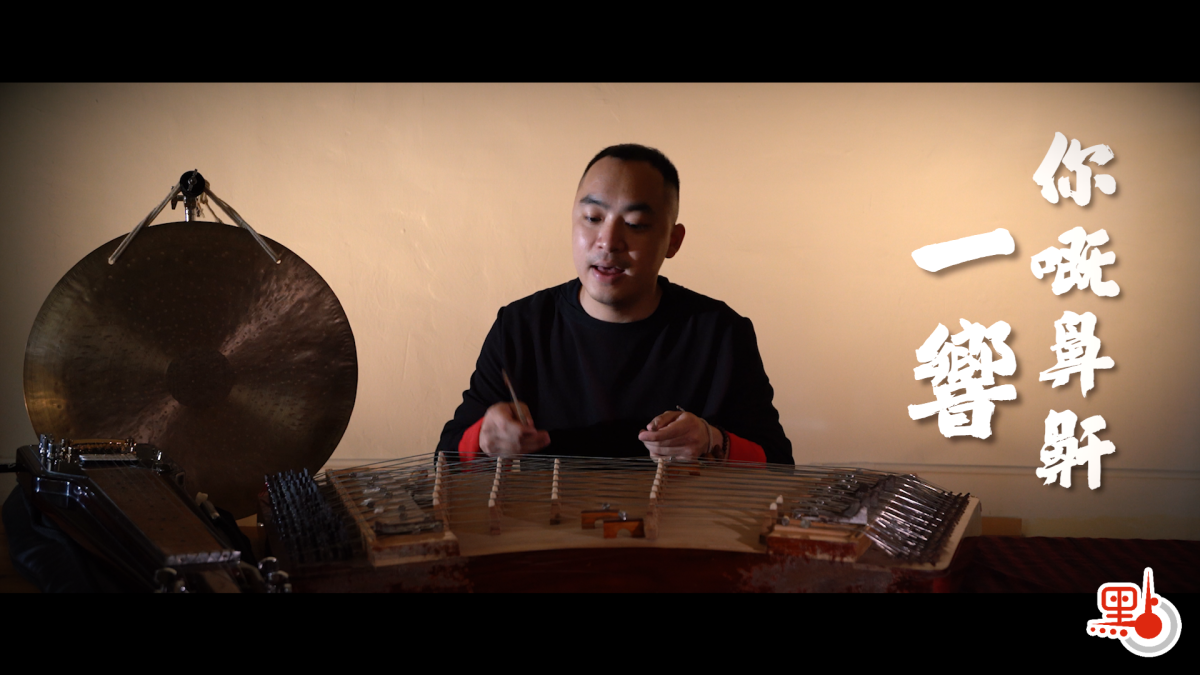"Today, separated by distance, we are rendered unable to meet; hence, the solitary vessel drifts into silence, as the evening air grows chill..."
In the film The Last Dance, themed on deathcare in Hong Kong, the protagonists repeatedly sing the lyrics from the Naamyam piece "Song of the Exile", expressing the impermanence of life and a myriad of emotions. Thereby, it draws more young people's attention to Naamyam, a performance art that embodies intangible cultural heritage.
Jason Kong Chun-kit is a creator of traditional Chinese opera and Naamyam. In recent years, he has focused on script and music creation, particularly enthusiastic about innovating "Naamyam rap" and "Pinghua" (a traditional Han Chinese performance art of storytelling with no musical accompaniment).



What is Naamyam?
Naamyam, as its name suggests, originates from a type of traditional rap-like song in the Lingnan region, using Cantonese as its medium and carrying rich cultural heritage. In the early 20th century, Naamyam became popular in Hong Kong, with performers often being visually impaired artists, respectfully called the "blind masters."
According to Jason, Naamyam, sung by the "blind masters", is known as "Dei Seoi Naamyam" ("earth and water" Naamyam), which stems from the Earth Trigram and the Water Trigram in the ancient Chinese divination book called I Ching. At that time, visually impaired individuals relied on divination for their livelihood. They would hold instruments, walking and singing in the streets to attract the attention of tea houses and restaurants, hoping to earn a living.



Naamyam as a palette: Breaking boundaries through collaborative fusion
"Naamyam can be very relatable to everyday life," as Jason mentions. With an increasing number of young people listening to Naamyam, he considers it important to create works that narrate contemporary stories and resonate with the present. He says, "There are countless subjects to explore, whether about Hong Kong's places, literature, or themes."



Since the age of nine, he has been involved in Cantonese opera and Kunqu, learning ancient melodies, gongs and drums, and Northern techniques from many masters. As a type of musical form within Cantonese opera, Naamyam serves as a way of storytelling, characterized by its simple melodies and strong adaptability, allowing for the creation of diverse texts and tones. He believes that Naamyam can evolve into a contemporary theatrical form, integrating with Xiqu (Traditional Chinese opera).

In his view, Naamyam is like a palette; through collaborations with artists from various fields, it mixes different artistic "colors"—instruments, texts, body movements, theater, spaces, installations, lighting, and images, making it possible to create works that reflect diverse artistic perspectives. He emphasizes that art does not need to be confined to established frameworks; stepping outside these boundaries does not mean abandoning tradition but rather engaging in collaborative fusion with the knowledge gained over time.
Creation beyond heritage—a journey of life shared with others

One of Jason's most profound creations is a piece in memory of his grandmother—"Grandma That Took Away Three Pieces of Chocolate. " He believes that the essence of creation lies in genuine emotions. "Speaking of her passing, where did her mind go? Did she hear our voices in the end or not at all? When she closed her eyes, what kind of world did she see?"

He has also invited his cousin to sing this song together, with his cousin playing the guitar, as a way to commemorate their grandmother. Many audiences were moved to tears.

Jason humbly expresses that he does not dare to call himself a preserver of tradition, for he believes that Naamyam itself is a form of heritage for Cantonese, particularly with the unique tonal fluctuations of Cantonese creating its distinct vocal style. When asked about how long he will continue with Naamyam, he replies, "I haven't thought about it because it's just about doing it until there's nothing left to do." He thinks the most important thing is to honestly open oneself and share stories with others, through which one will meet diverse individuals and together traverse the journey of life.
(Reporter: Hemingway; Camerapeople: Janey, Estella, Fai; Editor, Janey; Translator: Anson; English Editor: Darius)
Related News:
Chinapedia | Travel to China's 'Porcelain Capital', Jingdezhen
100 Ways To Drool | Chongqing's signature chili oil & aromatic peppers deliver hot pot bliss




















Comment